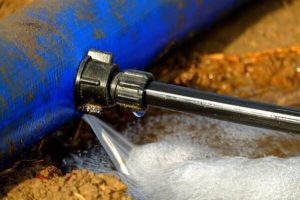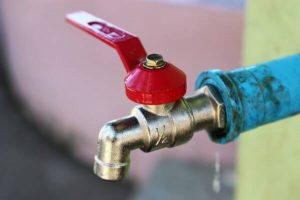Modern civilization has often allowed people to simply take many technological wonders for granted. Among these things include the convenient access to potable water from homes and offices. Although water backflow does not normally cross ordinary people’s minds, this phenomenon has proven to be life-threatening at best and lethal at worst.
In order to fully appreciate the danger of backflow, one must imagine herbicide-laced water from an industrial area running out of the faucets of the nearby residential area. This terrible case of siphoning backflow once happened in Woodsboro, Maryland in June of 1983.
In essence, backflow naturally occurs when hydraulic systems break down. But thanks to the backflow preventer, water from an unsuitable source (e.g. pool, garden sprinkle, or toilet) is restricted to its own channel (or network) and would not merge with the filtered water supply. Nowadays, every household in America is ‘legally required’ to have one or multiple backflow preventers in their main plumbing.
National Average Cost

Even though backflow preventer is an important part of home utility, it may not often be readily installed in a newly purchased house. Hence, there is a certain advantage for every household to be aware of the nuanced price range for the backflow prevention installation cost. However, it is important to understand that ballpark costs vary depending on the scope of the restriction of the pipeline or network.
Garden Hose or Appliance
A small backflow preventer is designed to keep foreign elements (e.g. dirt, fertilizer, or herbicide) from flowing back into the water supply. In essence, it only addresses the flow of a single channel and enables fluids to stream at one direction.
For a smaller variety of backflow preventer usually linked to a garden hose valve, the usual cost is anywhere around $3 to $35. Larger varieties installed into the spigots of home appliances like a power washer usually costs around $10 to $100.
Sprinkler, Irrigation or Sewer System
This type of backflow preventer covers more than one pipeline. These multi-valve backflow preventers are installed on a main water and sewer pipe. For this scope of backflow prevention cost, homeowners are usually looking at a price range between $100 and $600.
Normally, the labor cost for installing this type of backflow preventer is anywhere between $25 and $250. However, the backflow prevention installation cost may be covered by the overall professional labor fee when homeowners decide to have sprinklers installed in their residence.
Commercial or Multi-family
Huge complex backflow preventers are often installed in the main water supply covering a network of pipelines. The scope usually spans an entire commercial building or a multi-family residence like an apartment or neighborhood compound.
The conservative estimate for this type of backflow installation is anywhere between $1,000 and $10,000. However, some costs may even climb up to $30,000 for a vast industrial facility such as a food factory or a chemical processing plant.
Other Necessary Costs
In terms of the decision for putting a backflow preventer in one’s home, it is important to take note that the complete budget is not only limited to the backflow prevention installation cost. In fact, there are other additional expenses that have nothing to do with backflow prevention parts or the professional labor fee.
An article published on a website called Sprinkler Warehouse Blog features some of the tips that optimize every homeowner’s investment – making each penny spent count. Here are the other necessary costs worth considering:
Permit Fee
Permit fees may vary depending on the location. It is highly advisable to inquire from the city or county authorities. The vague estimate would not exceed $50 but in some places, acquiring a permit might be free of charge.
Backflow Testing Fee
For customers who are not highly knowledgeable about the efficiency of the apparatus installed, they could hire an expert to assess its functionality. Exact prices may vary according to the location but the usual estimate is anywhere around $75 to $85. It is important to take note that this price range is only restricted to residential testing.
Anti-theft
It is possible for the entire backflow prevention cost spent to reduce its value to $0, if not incur additional ballpark price of $500 for replacement. Most people tend to forget that, like all purchasable items, backflow preventers could also be stolen.
Petty thieves may steal these ‘easy-to-get’ outdoor hydraulic gears on account of their expensive metallic material. Smart homeowners would either install a steel cage (from $300 to $600) around the backflow prevention outlet or latch a steel lock (at $236.36) on the valve.
Thermostatic Freeze Relief Valves
In some areas (e.g. Minnesota, Wisconsin, Illinois, or New York) winter climate could drop at freezing point and, as a result, could render backflow preventers disabled. Extreme low temperatures could fracture backflow preventers. To prevent this from happening, it is highly advisable for homeowners to insulate these hydraulic gears from freezing.
Although there are many ways to ‘winterize’ pipes directly exposed to the climate, one of the best solutions is to install a thermostatic freeze relief valves. These spigots automatically decompress the pipeline caused by the pressure of frigid water. These additions are usually sold at a ballpark cost of no more than $100.
Leading US-based Providers
When it comes to backflow prevention cost, the best investment always comes from the best providers. A website by ASSE Plumbing made the list of the country’s biggest leading providers. Here are the names worth checking:

Ames Company, Inc.
Location: Woodland, California / Date founded: 1910
BAVCO
Location: Long Beach, California / Date founded: 1951
Cla-Val
Location: Costa Mesa, California / Date founded: 1936
Conbraco Industries
Location: Matthews, North Carolina / Date founded: 1928
Danfoss Flomatic Valve
Location: Glen Falls, New York / Date founded: 1933
FEBCO Backflow Prevention
Location: St. Pauls, North Carolina / Date founded: 1924
Hunter Industries
Location: San Marcos, California / Date founded: 1983
Mid-West Instrument
Location: Sterling Heights, Michigan / Date founded: 1953
Watts Regulator
Location: North Andover, Massachusetts / Date founded: 1874
Wilkins of Zurn Industries
Location: Paso Robles, California / Date founded: 1906
